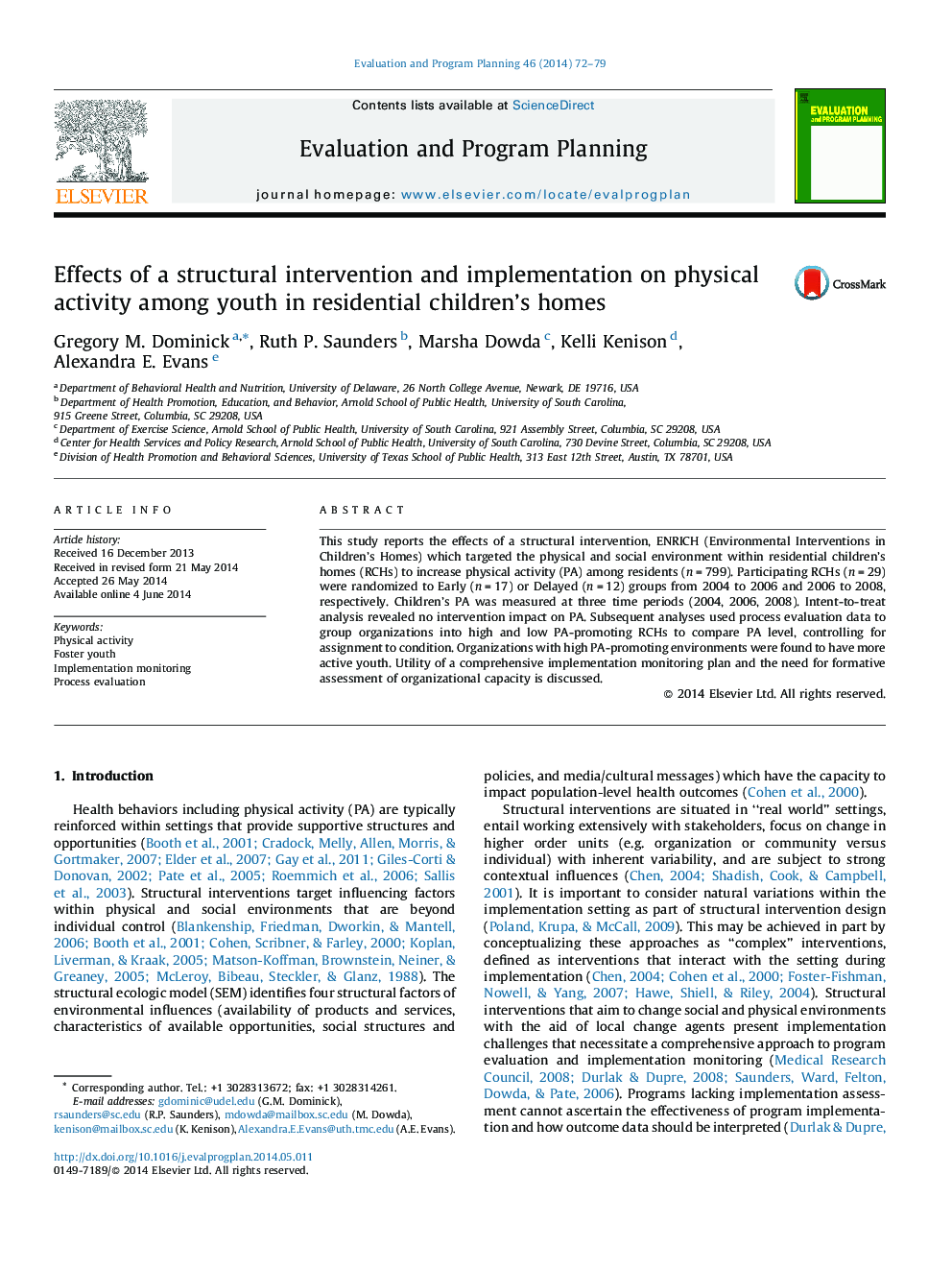| Article ID | Journal | Published Year | Pages | File Type |
|---|---|---|---|---|
| 321334 | Evaluation and Program Planning | 2014 | 8 Pages |
•ENRICH had no measurable impact on residential youth physical activity.•Process evaluation data revealed widespread implementation within control group.•Level of implementation (high versus low) was examined for all group homes.•Youth within high implementing homes were more physically active.•Implementation within organizational settings is impacted by broad contextual factors.
This study reports the effects of a structural intervention, ENRICH (Environmental Interventions in Children's Homes) which targeted the physical and social environment within residential children's homes (RCHs) to increase physical activity (PA) among residents (n = 799). Participating RCHs (n = 29) were randomized to Early (n = 17) or Delayed (n = 12) groups from 2004 to 2006 and 2006 to 2008, respectively. Children's PA was measured at three time periods (2004, 2006, 2008). Intent-to-treat analysis revealed no intervention impact on PA. Subsequent analyses used process evaluation data to group organizations into high and low PA-promoting RCHs to compare PA level, controlling for assignment to condition. Organizations with high PA-promoting environments were found to have more active youth. Utility of a comprehensive implementation monitoring plan and the need for formative assessment of organizational capacity is discussed.
